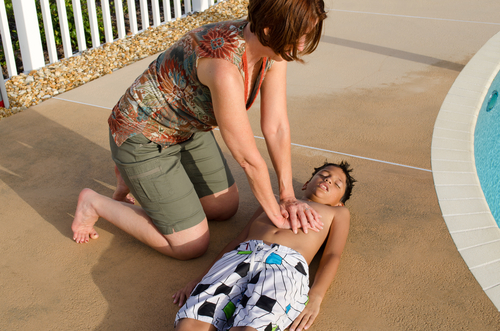
Child CPR is very similar to adult CPR, however, there are a few key differences. “Child” refers to anyone aged 1 to the start of puberty. People this age are much smaller and their bones are weaker, which both have to be taken into consideration. As always, once identified that CPR is required, make sure that someone has called the Emergency Medical Services. This page will cover the differences between adult CPR and child CPR. Read up on the normal process of CPR for adults.
The Main Differences of Child CPR
When you have identified that a child requires CPR, initially you do not start immediately with chest compressions. Instead, you first administer 5 rescue breaths. What this does is reoxygenate the lungs. This is the same process as if someone, no matter what their age, requires CPR due to drowning.
The correct way to carry out chest compressions is different. First of all, you only need to use one hand as their chest is not as deep as an adults. You still place it in the same place, you just do not need the force of two hands. As well as this, you do not need to press in as far as you would with an adult. In proportion, it is the same, however, you do not want to end up crushing the heart by pushing in extremely far. You want to be aiming for about a third of the depth of their chest. Of course, this is dependant on the size of the child.
When carrying out rescue breaths, remember that the lungs of the child will be much smaller. Therefore, make sure not to breathe an adult-lung-sized breath into them.
For more information on training courses, visit our “Courses” page which also includes our First Responder and First Person on Scene (FPOS) Courses. If you have any queries, don’t hesitate to contact us via our website or call us on 01206 805359.
